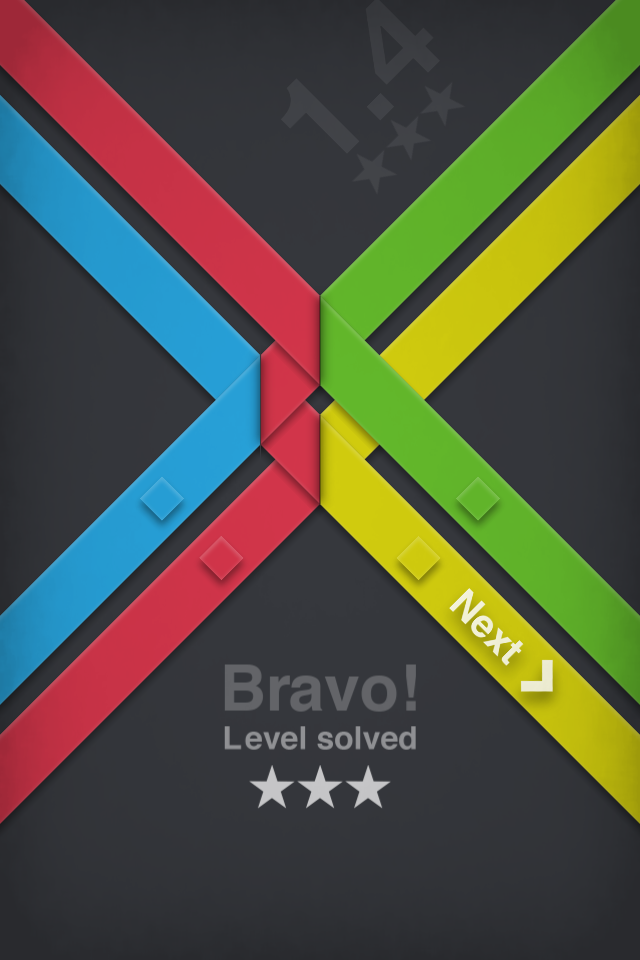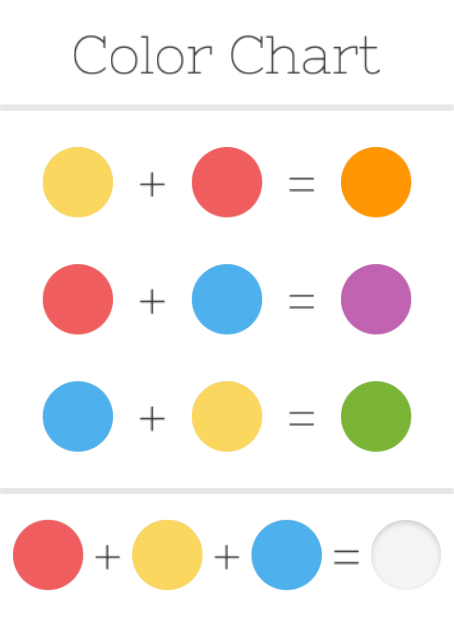The other day I noticed the polished icon of The Weaver among the new releases, and I was thrilled to see that it was developed by the Portuguese Pyrosphere.
Pyrosphere might not be as well known as other big names in the industry, but I think it is one of the best developers of puzzle games in the world. I've reviewed other great games by them in the past: Lazors, Chess Light, and Bloom Box.
I wasn't disappointed; The Weaver is excellent, and I couldn't stop playing until I had almost finished it.
There is a remarkable number of ribbon-weaving puzzle games: clearly it has something that appeals to our playful side. I reviewed TAPES just last week, but the obvious precursor of this game is Strata In my review, I criticized Strata because it was possible to solve all its puzzles using a mechanical procedure. I'm glad to say that while The Weaver looks remarkably similar at first glance, it doesn't have a similar weakness.
The play area consists of a few colored ribbons entering from above. Their paths are blocked by colored squares; your objective is to route the ribbons in such a way that each ribbon exits the screen passing over a square of the same color.
One move consists of tapping one of the intersections. That folds the two ribbons passing there, making them go in the opposite direction. For example here my first move is on the blue and green ribbons, which produces this result:
The blue ribbon was able to exit the screen because it's now passing over a blue square.
Note that the fold only happens along a vertical line: this means that the ribbons always enter from the top, change direction a number of times, and exit from the bottom. You cannot send a ribbon back to the top. This fact can be used for many logic deductions.
For example in the position above if I let the green ribbon go over the red one, there's no way to make it climb back to the green exit. Therefore, I must put a fold on the red/green intersection, like this:
And with a final move, the puzzle is solved.
In this case the solution was unique, but in general the puzzles can be solved in multiple ways. The number of stars you get depends on how many folds you did. Note that you can do as many moves as you want while solving the puzzle; the only thing that matters is how many folds are left at the end.
I haven't verified this, but knowing the quality of Pyrosphere's puzzles I'm pretty sure that every puzzle has only one 3-star solution.
As you progress through the game, there are no additional mechanics: the only things that change are the sizes of the puzzles (which aren't necessarily square), and the number of colors shown on each exit. Interestingly, having more options on each exit actually makes the puzzles harder, not easier, because it adds uncertainty, and the optimal solution is only one.
But there are logic deductions that can be applied to this additional uncertainty, too. For example in the above puzzle there is only one purple ribbon, which must exit from the bottom left. All the other purple exits are just decoys that can be ignored.
Things get more and more complicated and in the later puzzles it becomes difficult to solve the puzzles solely through logic; like in Lazors, you have to also rely on intuition and experimentation.
Often times, you can reach a suboptimal solution rather quickly but then have to spend a lot more time improving it if you want to get three stars.
One thing to note is that, unlike in other games, in this one the ribbon metaphor wouldn't be really needed. Instead of ribbons, you could have had light beams and vertical mirrors: the effect on the puzzle mechanics would have been identical.
However, it wouldn't have been nearly as fun: the use of ribbons is a major element in the appeal of this game. The way how the animate as you make your moves is relaxing and almost hypnotic. I think this game is a perfect application of a game design principle well explained by Ted Brown in an article I read some time ago:
©2014 Nicola Salmoria. Unauthorized use and/or duplication without express and written permission is strictly prohibited. Excerpts and links may be used, provided that full and clear credit is given to Nicola Salmoria and nontrivialgames.blogspot.com with appropriate and specific direction to the original content.
Pyrosphere might not be as well known as other big names in the industry, but I think it is one of the best developers of puzzle games in the world. I've reviewed other great games by them in the past: Lazors, Chess Light, and Bloom Box.
I wasn't disappointed; The Weaver is excellent, and I couldn't stop playing until I had almost finished it.
There is a remarkable number of ribbon-weaving puzzle games: clearly it has something that appeals to our playful side. I reviewed TAPES just last week, but the obvious precursor of this game is Strata In my review, I criticized Strata because it was possible to solve all its puzzles using a mechanical procedure. I'm glad to say that while The Weaver looks remarkably similar at first glance, it doesn't have a similar weakness.
The play area consists of a few colored ribbons entering from above. Their paths are blocked by colored squares; your objective is to route the ribbons in such a way that each ribbon exits the screen passing over a square of the same color.
One move consists of tapping one of the intersections. That folds the two ribbons passing there, making them go in the opposite direction. For example here my first move is on the blue and green ribbons, which produces this result:
The blue ribbon was able to exit the screen because it's now passing over a blue square.
Note that the fold only happens along a vertical line: this means that the ribbons always enter from the top, change direction a number of times, and exit from the bottom. You cannot send a ribbon back to the top. This fact can be used for many logic deductions.
For example in the position above if I let the green ribbon go over the red one, there's no way to make it climb back to the green exit. Therefore, I must put a fold on the red/green intersection, like this:
And with a final move, the puzzle is solved.
In this case the solution was unique, but in general the puzzles can be solved in multiple ways. The number of stars you get depends on how many folds you did. Note that you can do as many moves as you want while solving the puzzle; the only thing that matters is how many folds are left at the end.
I haven't verified this, but knowing the quality of Pyrosphere's puzzles I'm pretty sure that every puzzle has only one 3-star solution.
As you progress through the game, there are no additional mechanics: the only things that change are the sizes of the puzzles (which aren't necessarily square), and the number of colors shown on each exit. Interestingly, having more options on each exit actually makes the puzzles harder, not easier, because it adds uncertainty, and the optimal solution is only one.
But there are logic deductions that can be applied to this additional uncertainty, too. For example in the above puzzle there is only one purple ribbon, which must exit from the bottom left. All the other purple exits are just decoys that can be ignored.
Things get more and more complicated and in the later puzzles it becomes difficult to solve the puzzles solely through logic; like in Lazors, you have to also rely on intuition and experimentation.
Often times, you can reach a suboptimal solution rather quickly but then have to spend a lot more time improving it if you want to get three stars.
One thing to note is that, unlike in other games, in this one the ribbon metaphor wouldn't be really needed. Instead of ribbons, you could have had light beams and vertical mirrors: the effect on the puzzle mechanics would have been identical.
However, it wouldn't have been nearly as fun: the use of ribbons is a major element in the appeal of this game. The way how the animate as you make your moves is relaxing and almost hypnotic. I think this game is a perfect application of a game design principle well explained by Ted Brown in an article I read some time ago:
Give [your players] a clear goal, give them a simple way to achieve that goal, give them fantastic feedback, and stop there. It might be enough.I'd also like to mention that while I've been growing used to recent games running poorly on my old 4th Gen iPod Touch, this one runs beautifully. So don't waste any more time and go download this little treasure.
Summary
| Nontrivialness | ★★★★☆ |
| Logical Reasoning | ★★★★☆ |
| User Interface | ★★★★☆ |
| Presentation | ★★★★★ |
| Loading Time | ★★★★★ |
| Saves Partial Progress | ✘ |
| Status Bar | ✘ |
©2014 Nicola Salmoria. Unauthorized use and/or duplication without express and written permission is strictly prohibited. Excerpts and links may be used, provided that full and clear credit is given to Nicola Salmoria and nontrivialgames.blogspot.com with appropriate and specific direction to the original content.
































